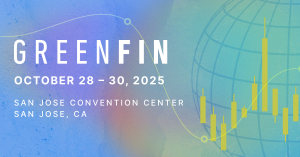John Elkington: Are we nearly there yet?
The cofounder of Volans and SustainAbility says it's time to measure actions on social impact and sustainability goals. Read More

I don’t do New Year’s resolutions, but as 2015 dawned I felt the tug. Once again, I had spent much of the holiday period thinking through this great agenda of ours, while preparing a white paper supported by the Generation Foundation. As I did so, a child’s voice came to mind, asking: “Are we nearly there yet?”
Frankly, if someone asked that question today about the sustainability agenda, I would struggle to give an answer. What would your answer be? I resolve to find out, over time.
Happily, I did find time to read, including a stunning book on evolutionary biology by Andreas Wagner called “Arrrival of the Fittest.” His question is not how natural selection pulls through the fittest adaptations, but how nature pushes forward an array of potential — and remarkably diverse — solutions to any given challenge.
Wagner’s answer is that, rather than being a random walk with nature seen as akin to Richard Dawkins’ blind watchmaker, life has built up an immense library of potential solutions. Now unimaginably immense, this operates in multiple dimensions, with potential solutions available more or less wherever you look. So instead of a species risking death — even extinction — by exploring new metabolic pathways, it often can progress through a series of smaller, less risky modifications.
Instead of breakthrough innovations flowing from individual “Eureka!” moments or single giant leaps, most important innovations are combinatorial, pulling together existing ideas. Think of the jet engine, which combined a compressor with a combustion chamber and a turbine, none of which was new at the time.
So how close are we to being able to combine multiple solutions in this way in the sustainability world? This question surfaced as I talked to David Grayson, professor at the Doughty Centre for Corporate Responsibility, Cranfield School of Management. With colleagues, he recently launched a survey of initiatives and organizations aiming to “renew capitalism” — flagging more than 130, including our own Breakthrough Capitalism platform and Generation’s Sustainable Capitalism (PDF) framing.
Which raised an even bigger question for me. Is it time for our sector — whether we use CSR, shared value, cleantech, impact investment or sustainability framing — to do a rigorous self-assessment? If so, should it be open-sourced or via an independent evaluation? Zoom or wide-angle? One-off or periodic? And using which criteria?
One devastating assessment I received at school was: “John sets himself low standards — and consistently fails to achieve them.” True, that was for a course where I struggled to see the relevance of what I was being taught. But how far have we gotten in persuading the Global C-Suite, the top teams of the world’s most powerful companies, of the relevance of our own agenda?
Various people have pulled together various elements of the ongoing transition: Jeremy Leggett of Solarcentury on the renewables front, for example; Jeremy Rifkin on the hydrogen economy; Bob Eccles and Michael Krzus on integrated reporting; and Janine Benyus on biomimicry. But these fields are still often effective silos — and it is often striking how little people in one area know about what is going on even in contiguous silos.
But some are pulling the various strands of the agenda together. Among people with a panoptic vision, Lester Brown long has stood out. The various versions of his Plan B progress reports have been required reading. Then came The B team with its own Plan B — and plans for a progress report late in 2015.
The World Business Council for Sustainable Development, too, is pushing beyond its Vision 2050 to develop an Action 2020 platform — where the focus is on solutions that are measurable, scalable, replicable, beyond business as usual, and good for business.
But would organizations such as WBCSD or the U.N. Global Compact dare to publicly assess their member companies’ progress toward a declared global benchmark — such as that under development by the 3D Investment Foundation and The Natural Step Canada? Would The B team publish the progress of its expanding membership against the priorities expressed in its own Plan B and in the linked book I wrote with Jochen Zeitz, “The Breakthrough Challenge”?
And, critically, would such organizations be willing to publish the ratios between where their members are and where they need to be, as the Stockholm Resilience Center has done (generically) with its Planetary Boundaries analysis — and the Global Footprint Network with various countries?
Such questions are vital to ensure that we do not build our own echo chambers, as we long have accused business of doing. I take some comfort from the fact that I often break out of echo chambers, as when speaking to 900 company directors in Singapore recently. But look around most audiences we collectively engage and you still see a heavy representation of the usual suspects.
So what would someone from the 2070s, say, an examiner representing a future Court of the Generations, make of what we are collectively doing today? Would they give us a grade of Distinction — or Fail? Perhaps a gold star for effort?
Among questions they might ask: How good is the sustainability sector at converting scarce funding resources into impact and returns? We may talk about system change, but how would we know we were on track? Is the recent merger between the Carbon War Room and the Rocky Mountain Institute an early sign of a coming consolidation in the market — or something else? What influence are we having on governments? On the Global C-Suite? On entrepreneurs? And on education, particularly in business schools?
These are just some questions currently buzzing around my brain that I resolve to try to answer in the coming year — and years. A key focus of the coming year will be the challenge of aligning the next round of corporate targets with emerging global goals. Meanwhile, I am wide open to your suggestions as to how any such answers are best pursued and — when found — effectively communicated.

Subscribe to Trellis Briefing
Featured Reports

Deploying Climate Tech at Scale






